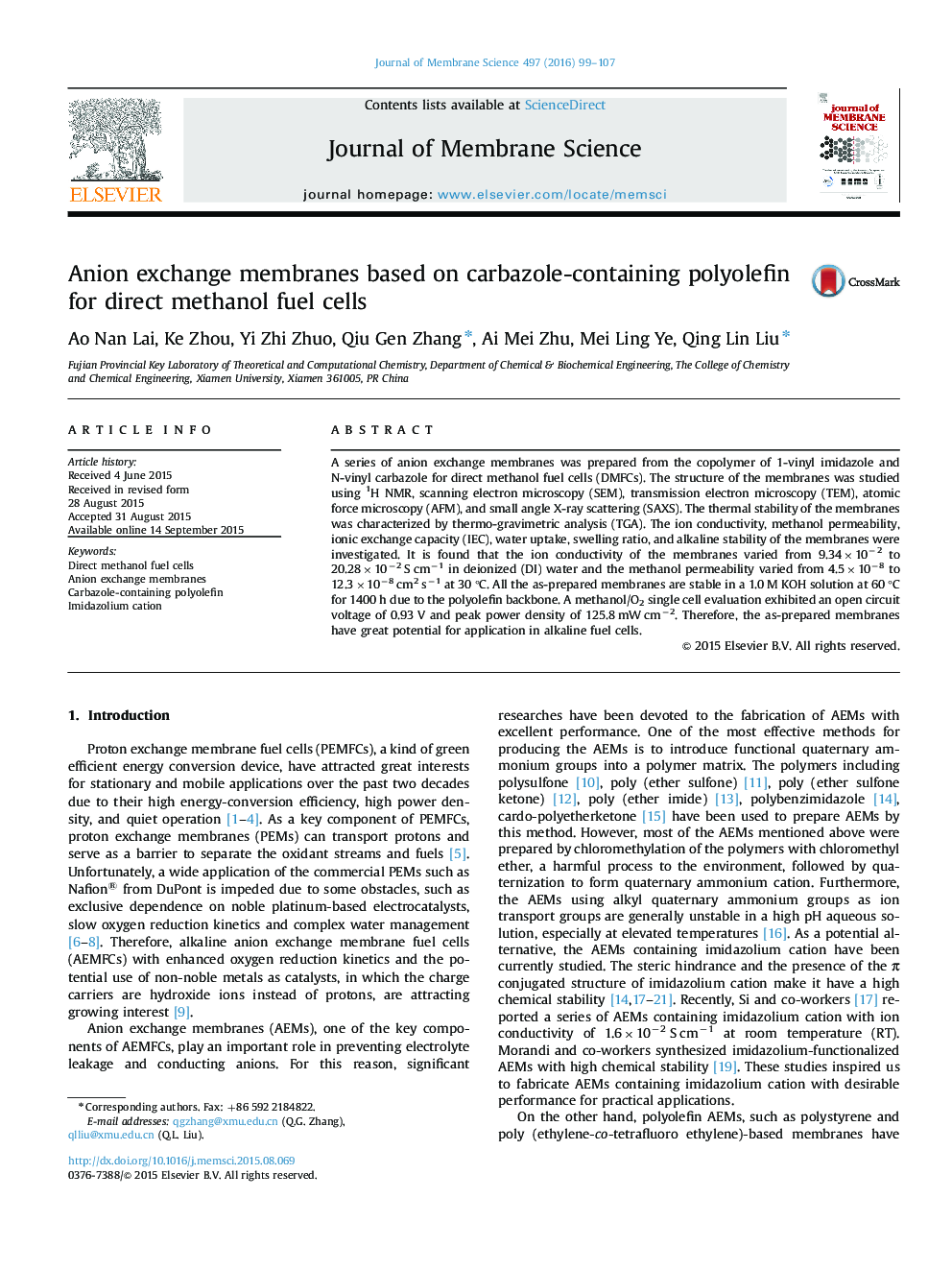| Article ID | Journal | Published Year | Pages | File Type |
|---|---|---|---|---|
| 632649 | Journal of Membrane Science | 2016 | 9 Pages |
•Anion exchange membranes are prepared using 1-vinyl imidazole and N-vinyl carbazole.•Crosslinked membranes were synthesized using 1, 4-dibromobutane.•The ion conductivity is in the range of 9.34–20.28×10−2 S cm−1 at 30 °C.•The membranes are stable in a 1.0 M KOH solution at 60 °C for 1400 h.
A series of anion exchange membranes was prepared from the copolymer of 1-vinyl imidazole and N-vinyl carbazole for direct methanol fuel cells (DMFCs). The structure of the membranes was studied using 1H NMR, scanning electron microscopy (SEM), transmission electron microscopy (TEM), atomic force microscopy (AFM), and small angle X-ray scattering (SAXS). The thermal stability of the membranes was characterized by thermo-gravimetric analysis (TGA). The ion conductivity, methanol permeability, ionic exchange capacity (IEC), water uptake, swelling ratio, and alkaline stability of the membranes were investigated. It is found that the ion conductivity of the membranes varied from 9.34×10−2 to 20.28×10−2 S cm−1 in deionized (DI) water and the methanol permeability varied from 4.5×10−8 to 12.3×10−8 cm2 s−1 at 30 °C. All the as-prepared membranes are stable in a 1.0 M KOH solution at 60 °C for 1400 h due to the polyolefin backbone. A methanol/O2 single cell evaluation exhibited an open circuit voltage of 0.93 V and peak power density of 125.8 mW cm−2. Therefore, the as-prepared membranes have great potential for application in alkaline fuel cells.
Graphical abstractFigure optionsDownload full-size imageDownload high-quality image (239 K)Download as PowerPoint slide
